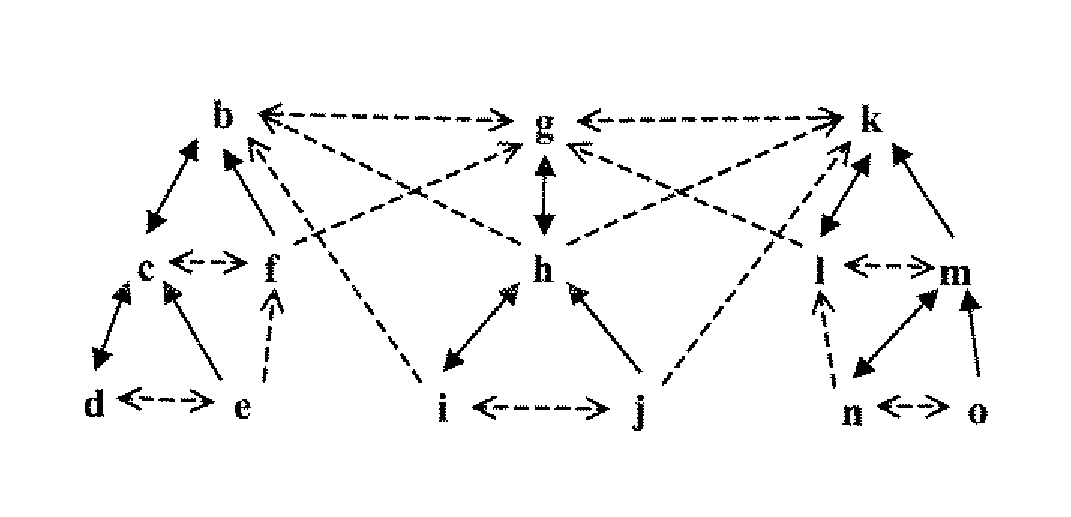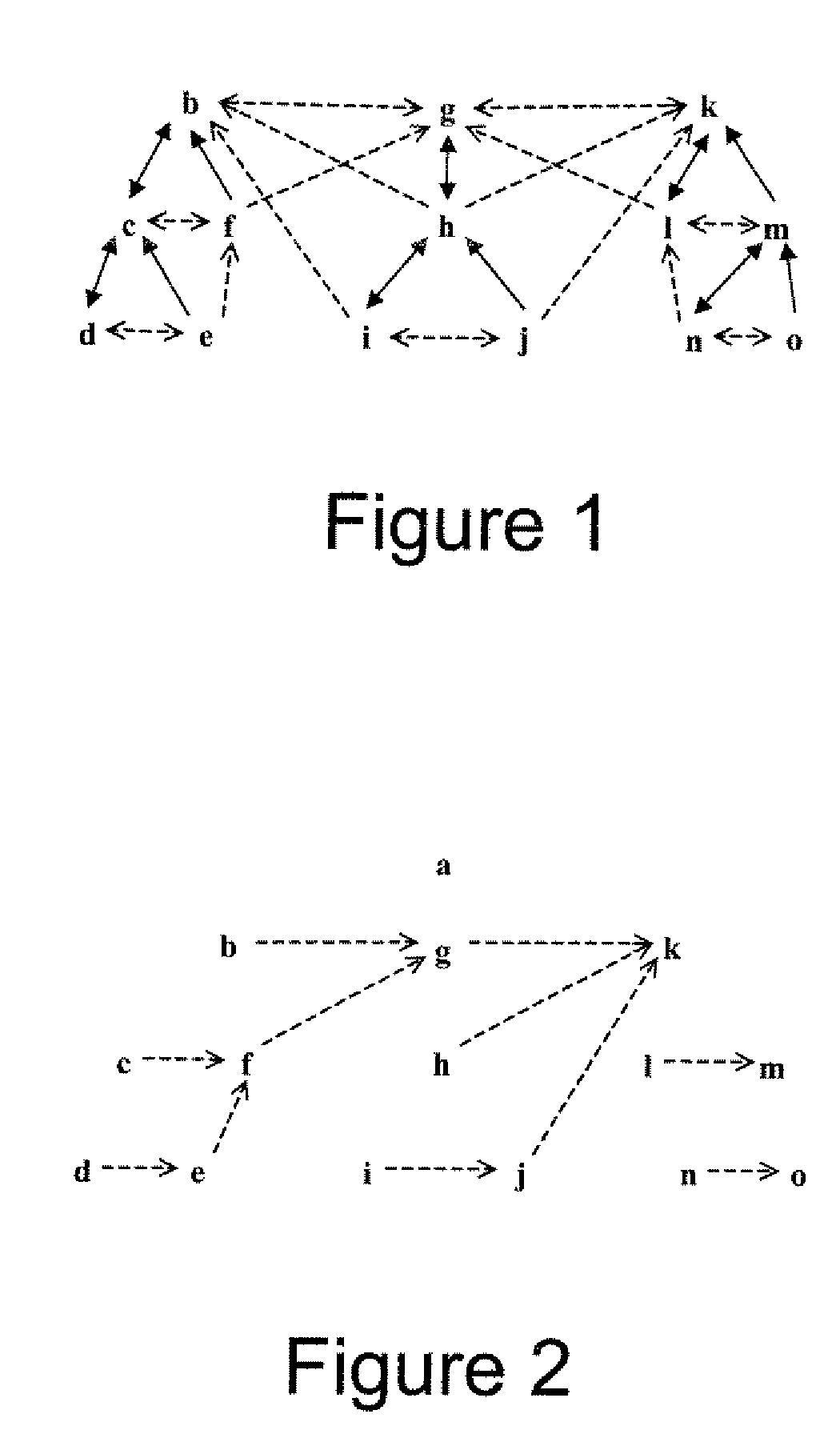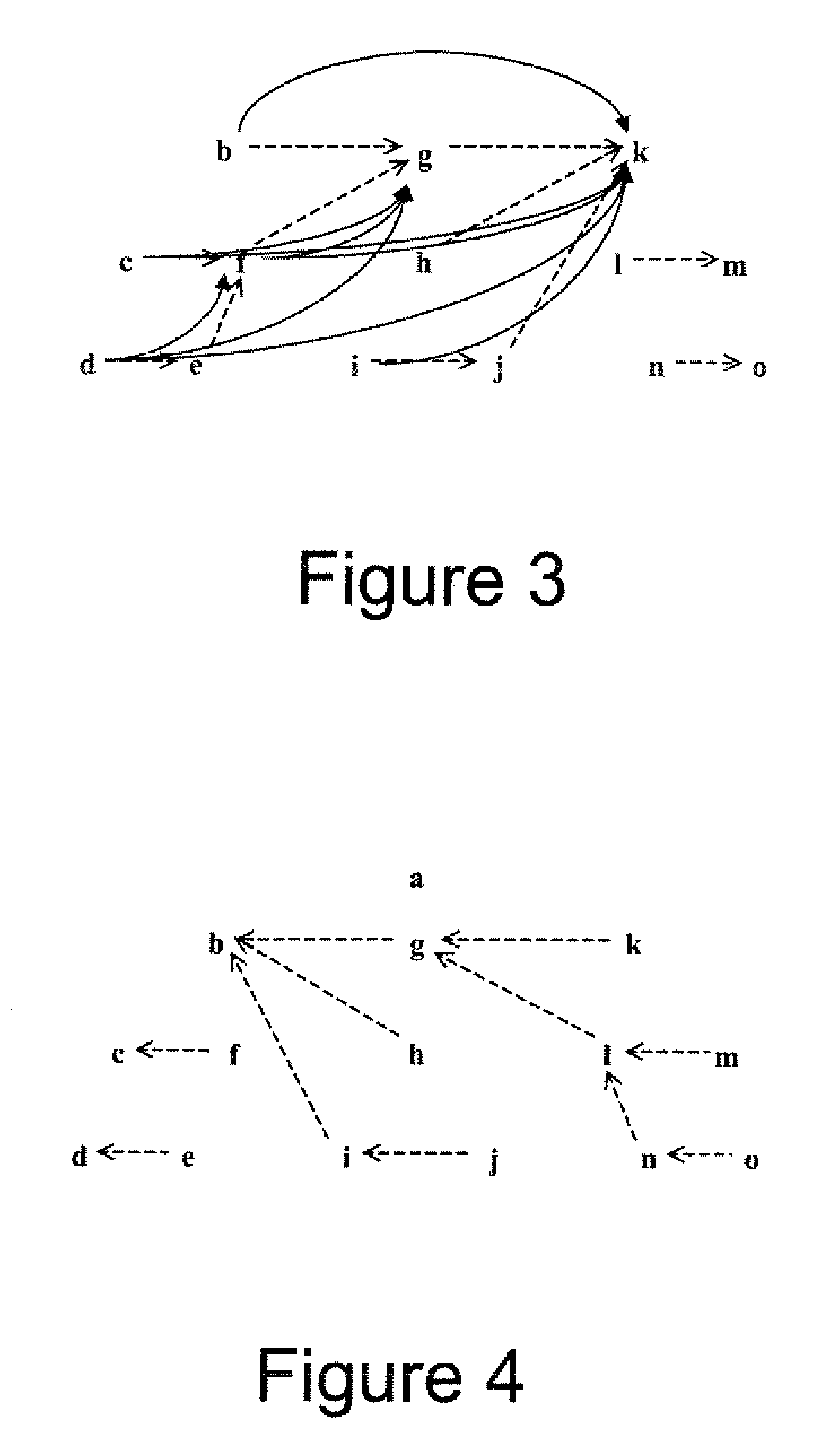[0010] In at least one embodiment, the present invention solve one or more problems of the prior art by providing an index
data structure usable for finding information in a peer-to-peer environment. The present embodiment extends the MTree, data structure provided in U.S.
patent application Ser. No. 11 / 233,869 filed on Sep. 22, 2005. The entire disclosure of this application is hereby incorporated by reference. MTree as set forth in that
patent application is an
XPath navigational index useable to index
XML documents. The present embodiment, refers to as MTreeP2P, extends MTree to become a content-addressable distributed P2P semantic index that is the
underpinning for indexing and querying disparate distributed content. The index data structure of the present embodiment comprises a plurality of index keys for uniquely identifying potential context nodes associated with one or more
data objects. Each index key is, in turn, associated with one or more potential context nodes. Moreover, the index key has a
label that provides semantic content to a user. The MTreeP2P data structure further comprises one or more routing tables associated with each index key. In general, the one or more routing tables comprising a plurality of pat references. Advantageously, the present embodiment allows
XPath to be used as a P2P
query language. The modifications to MTree
exploit and extend the design features enabled by the MTree axis threads, especially the following and preceding axis threads. By extending the axis references on each node to contain multiple references about the neighbor's out neighborhoods, axis can be used for routing and for complex query resolution. Furthermore, by creating hierarchical paths that contain semantically meaningful information, essentially variants of
topic maps, knowledge can be represented in the index and queried directly. The present embodiment provides a semantically integrated, distributed indexing
system.
[0011] MTreeP2P allows for semantic indexing of disparate
data objects enabling the sharing of
collaborative intelligence and the reuse of
collective intelligence. This is achieved, in part, by allowing for multiple semantic paths with varying lengths to the same or different nodes to coexist. The obvious preference is to define nodes using precisely agreed upon canonical entity names placed into a precisely defined hierarchical schema, given a
confidence interval and support threshold, but in practice widespread agreement is not always possible. Since many words are homonyms, a single word alone cannot provide enough semantic
contextual information to support a unique concepts but a sequence of words organized in a path of sufficient length can uniquely define an ontological concept. MTreeP2P enables multiple ontological mappings to reside side-by-side by allowing multiple paths through the same node, such that, the mediation technology is removed and the tasks for mediation are assigned back to the end points by mapping the end-point to the MTreeP2P index.
[0012] Another
advantage of MTreeP2P is that disparate data objects are mapped and integrated into an internet wide unifying semantic index structure that can be queried using a standard
query language such as
XPath or
XQuery. This approach is in contrast to the current state of the art where special purpose query tools, applications, databases and indexes are constructed for each type of technology. The ad-hoc structure of the semantic paths allows efficient mapping of disparate objects into a dynamically changing structure, while still responding to queries in a meaningful way. Using a semantic index allows a question to be posed to the index with semantically meaningful linguistic terms rather than use of query languages that require knowledge of the underlying physical data base structure, such as when
SQL join queries are constructed on relational tables.
[0013] MTreeP2P allows humans and devices to query the index for the information desired instead of building unique logic in
program code that is specific to each disparate data object, which is the typical method used to develop interfaces. Therefore, the
advantage of MTreeP2P is that disparate data objects need to build their interfaces once to conform to the extended XPath /
XQuery semantics to enable efficient access from many other technologies.
 Login to View More
Login to View More  Login to View More
Login to View More 


